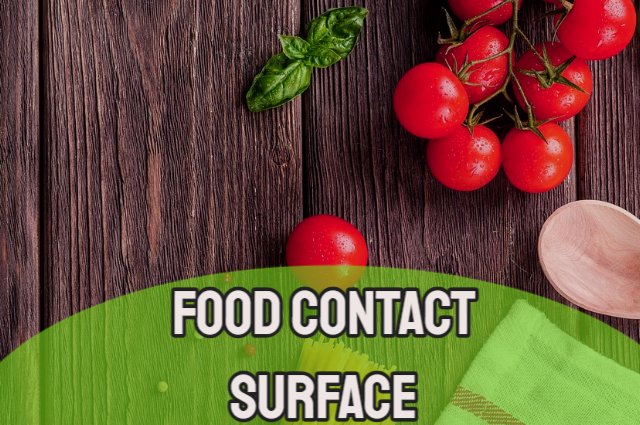Table of Contents
Introduction
When it comes to food safety, proper selection of materials and design of food contact surfaces is crucial in preventing potential food contamination. While features for durability and function are important, they cannot compromise concerns for food safety. Simply put, surfaces that come into contact with food should be safe, non-corrosive and easily cleaned and sanitized. Read this article to know what characteristics must food contact surfaces have?
Importance of Food Contact Surfaces in Food Safety
Food contact surfaces are the physical barriers between food and the environment in which it is prepared, served or stored. These surfaces play a critical role in preventing cross-contamination and the spread of foodborne illnesses. Inadequate food contact surfaces can harbor bacteria and other harmful microorganisms, which can then be transferred to food, leading to illness and even fatalities.
It is essential to ensure that food contact surfaces are designed and constructed in a way that prevents or minimizes the risk of contamination. This means that these surfaces should be easy to clean, resistant to corrosion and abrasion, and non-porous.
Essential Characteristics of Food Contact Surfaces
Here are the three essential characteristics that every food contact surface must have:
Non-Porous Surface
A non-porous surface is one that does not allow liquids or gases to pass through it. This is an important characteristic for food contact surfaces because it prevents the absorption of liquids, which can harbor bacteria and other microorganisms. Non-porous surfaces are also easier to clean and sanitize because they do not absorb water or cleaning agents.
Examples of non-porous materials that are commonly used for food contact surfaces include stainless steel, plastic, and glass. These materials are smooth, easy to clean, and do not allow bacteria to grow on their surface.
Resistance to Corrosion and Abrasion
Resistance to corrosion and abrasion is another essential characteristic of food contact surfaces. Corrosion occurs when a metal surface reacts with its environment, leading to rust or other forms of degradation. Abrasion occurs when a surface is worn down by repeated use or cleaning.
Corrosion and abrasion can create crevices and pits in the surface of food contact surfaces, which can harbor bacteria and other microorganisms. It is therefore important to choose materials that are resistant to corrosion and abrasion, such as stainless steel or plastic. These materials are durable, long-lasting, and resistant to damage from cleaning agents and other harsh chemicals.
Smooth Surface
A smooth surface is one that is free from scratches, dents, and other imperfections. A smooth surface is important for food contact surfaces because it prevents bacteria and other microorganisms from accumulating in crevices and other hard-to-reach areas. Smooth surfaces are also easier to clean and sanitize because there are no areas where bacteria can hide.
Examples of materials that are commonly used for food contact surfaces include stainless steel, plastic, and tempered glass. These materials are smooth, easy to clean, and resistant to damage from cleaning agents and other harsh chemicals.
Conclusion
In conclusion, every food contact surface must have the three essential characteristics of being non-porous, resistant to corrosion and abrasion, and smooth. These characteristics are crucial in ensuring food safety by preventing the accumulation of bacteria and other harmful microorganisms on food contact surfaces. It is important to choose materials that are durable, long-lasting, and easy to clean and sanitize.
Summary of the Three Essential Characteristics and Their Importance in Food Safety
Food contact surfaces play a critical role in preventing cross-contamination and the spread of foodborne illnesses. The three essential characteristics that every food contact surface must have are a non-porous surface, resistance to corrosion and abrasion, and a smooth surface. These characteristics help prevent the accumulation of bacteria and other harmful microorganisms on food contact surfaces, ensuring food safety for all consumers.
Frequently asked questions
What is the best way to reduce bare hand contact while preparing ready-to-eat food?
The best way to reduce bare hand contact while preparing ready-to-eat food is by using utensils, such as tongs, spoons, spatulas, or deli tissues, and by wearing disposable gloves. It is essential to wash your hands thoroughly before putting on gloves and to change gloves whenever they become contaminated or damaged. Additionally, practicing proper hand hygiene and following food safety guidelines are crucial in preventing cross-contamination and ensuring the safety of ready-to-eat food.
What is the correct temperature and time used for reheating hot holding food?
The correct temperature and time for reheating hot holding food is to ensure that it reaches an internal temperature of 165°F (74°C) for at least 15 seconds. This process should be completed within two hours to minimize the risk of bacterial growth and ensure food safety. Always use a food thermometer to verify the internal temperature before serving the reheated food.
What is the maximum receiving temperature for tcs in degrees Fahrenheit?
The maximum receiving temperature for Time/Temperature Control for Safety (TCS) foods in degrees Fahrenheit is 41°F (5°C) or below for cold foods and 135°F (57°C) or above for hot foods. It is essential to check the temperature of TCS foods upon delivery to ensure they are within the safe temperature range to prevent the growth of harmful bacteria and maintain food safety.
What is the maximum time food can remain in the temperature danger zone?
The maximum time food can remain in the temperature danger zone, which is between 41°F (5°C) and 135°F (57°C), is 4 hours. Beyond this time, the risk of harmful bacteria growth and potential foodborne illnesses increases significantly. It is crucial to monitor and control the temperature of foods to ensure they remain within safe limits and maintain food safety.
